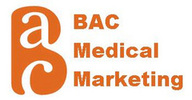Experts say this is an enormous gap that has held steady over the past years even as overall mortality rates have improved.
The "Thirteenth Annual HealthGrades Hospital Quality in America" study analyzed objective mortality and complication rates at all of the nation's 5,000 nonfederal hospitals using 40 million hospitalization records obtained from the Centers for Medicare and Medicaid Services, part of the U.S. Department of Health and Human Services.
The study, the largest of its kind, identified national and state-level trends in hospital care quality and established quality ratings for each hospital, across 26 different procedures and diagnoses. The ratings are now online, allowing individuals to compare their local hospitals.
Looking at overall trends, the HealthGrades study found that hospital mortality rates, on average, have declined by 7.98 percent over the three-year period studied, from 2007 to 2009. Of the 17 mortality-based diagnoses and procedures analyzed, only two bucked the overall trend with increasing mortality rates – gastrointestinal surgeries and coronary intervention procedures.
As part of the study, HealthGrades rated individual hospitals with a one-star, three-star or five-star rating in each of 26 procedures and diagnoses, from bypass surgery to total knee replacements. A one-star rating means that the hospital performed below average, to a statistically significant degree, when compared with the other 5,000 hospitals. A three-star rating means the hospital's performance was average, and a five-star rating means the hospital outperformed the national average to a statistically significant degree.
Five-star rated hospitals had significantly lower risk-adjusted mortality across the three years studied. A typical patient would have a 72.47 percent lower risk of dying in a five-star rated hospital compared to a one-star rated hospital, and a 53.36 percent lower risk of dying by going to five-star rated hospital compared to the U.S. hospital average.
"We are encouraged by the steady improvement in mortality rates among America's hospitals, but there's an unacceptably wide gap that has persisted between the top-performing hospitals and all others in terms of patient outcomes," said Rick May, MD, an author of the study and a vice president with HealthGrades. "For hospital leaders as well as potential patients, it is essential that they understand – and act upon – these findings."
Key findings from the study include:
- The nation's hospitals unadjusted mortality improved on average 7.98 percent from 2007 through 2009 across the 17 diagnoses and procedures studied.
- All but two diagnoses and procedures saw reductions in the unadjusted mortality rates. Gastrointestinal surgeries and procedures and coronary interventional procedures were associated with an increase in unadjusted mortality of 8.76 percent and 9.26 percent respectively.
- The highest unadjusted mortality rates are among sepsis, respiratory failure, and gastrointestinal surgeries and procedures (20.59 percent, 19.45 percent, 10.29 percent, respectively).
- The most improvement in unadjusted mortality was seen in chronic obstructive pulmonary disease (18.73 percent), bowel obstruction (14.72percent), heart attack (13.68 percent), and stroke (13.50 percent).
- If all hospitals performed at the level of a five-star rated hospital, 232,442 Medicare lives could potentially have been saved from 2007 through 2009.
- Approximately 55.91 percent (129,949) of the potentially preventable deaths were associated with just four diagnoses: sepsis (48,809); pneumonia (29,017); respiratory failure (26,361); and heart failure (25,762).
- On average, one in nine patients developed a hospital-acquired condition, across the nine procedures evaluated for in-hospital complications, from 2007 to 2009.
- On average, a typical patient would have an 80.40 percent lower risk of developing one or more in-hospital complications by going to a five-star rated hospital compared to a one-star and a 63.64 percent lower risk of developing one or more in-hospital complications by going to a 5-star compared to the U.S. hospital average.

 RSS Feed
RSS Feed































